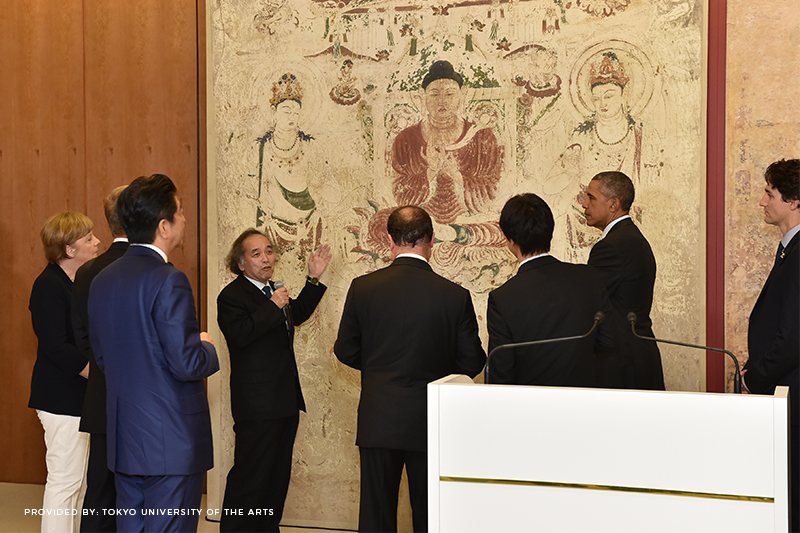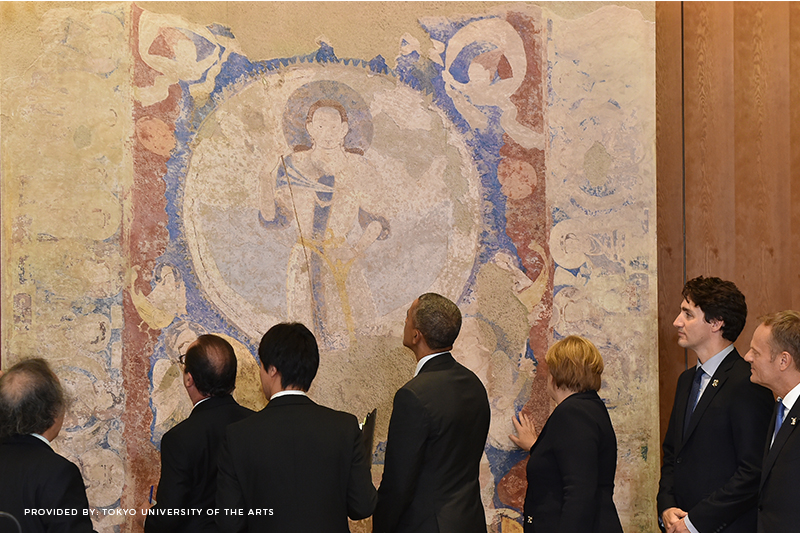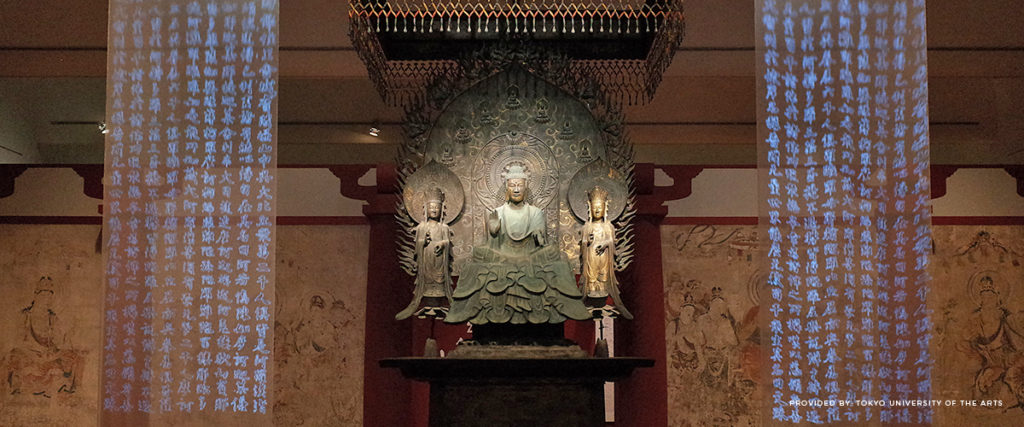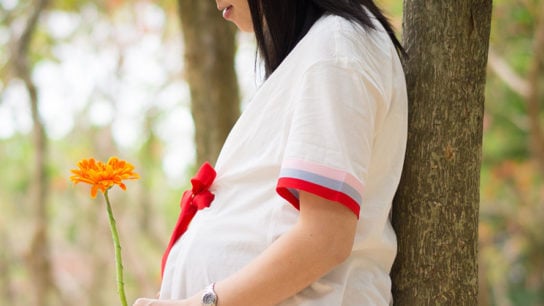We sit down with Kazuhiro Mihashi of Cloned Cultural Properties as he explains how 3D-technology is changing the way we preserve our cultural heritage and, in doing so, working towards the minor task of world peace.
If a picture tells a thousand words, then cultural assets such as Rome’s Colosseum or Japan’s Shaka Triad talk of centuries of cultural heritage. Yet, victims to the degradation of time, these beautiful relics face the ongoing paradox of needing to be safeguarded for cultural preservation whilst also being displayed for the sake of cultural diplomacy. Striving to solve this problem, in 2012, Professor Masaaki Miyasako of Tokyo University of the Arts began to develop a patented technology, Cloned Cultural Properties. Combining new-age technology such as 3D scanning and printing with traditional artistry, Masaaki wanted to create a “new artform” that not only precisely clones cultural assets but also, using data from the origins of the piece, revives it in its original form. Hive Life spoke with one of the project’s leaders, Kazuhiro Mihashi, to discover how cloning sacred antiques doesn’t only preserve Japan’s cultural heritage for the next generation, it also develops a shared language of peace.

For centuries, Japan has been in the tradition of copying cultural properties in order to hand down their religious and artistic value to the next generation – take Mosha, the practise of copying traditional scroll and screen painting by hand. Updating this for the 21st century is the Cloned Cultural Property project. “As a unique feature of Eastern culture, the reproduction is considered a new piece of art, which contains the spirit and inspiration of the origin through reproducing artistic activity,” Kazuhiro explains. “So, it’s a new art form rather than a simple replica, combining state-of-the-art digital technology and traditional analogue technology with craftsmanship and artistic sensibility. By recreating the DNA, we want to not only realise it on the surface but actually pass the traditional technique and mind of the artist from when it was created.”

Whilst cloning may feel like a fast track to dystopian doom, Kazuhiro assures us that futuristic 3D printing is just one cog in the artistic machine. A finished project is finessed through the combination of data collected from photographs and 3D scanning involving cultural research into the origin of the original and a team of diverse painters and sculptures from Japan. Take how they reproduced Japan’s national treasure, the Shaka Triad in Horyuji. Using what he describes as “optimised, digital-analogue mixed technology”, their team created a base metallic casting using 3D printing and scanning technology, completing the surface with traditional craftsmanship. As he explains, I believe “art created by humans can only be reproduced by humans, and it is only through human hands that the authenticity of the original can be passed on.”

Beyond the preservation of the past, Cloned Cultural Properties’ mission also looks to the future. “We believe that cultural assets are indispensable to the mutual understanding of world countries. Protecting cultural properties promotes world peace and contributes to the diverse development of our world’s culture,” he explains. “In 2001, the Taliban destroyed the 6th century Bamiyan Buddha statues in Afghanistan. By reviving lost cultural assets, we believe that our technology can create the mental pillars lost due to terrorism and work towards peace.” It is their hope that they can deter future attacks on cultural assets by sharing the knowledge that they can now be cloned worldwide.
The team of Cloned Cultural Properties broadcasted their technology globally, including at the G7 Ise-Shima summit in 2016, and with their hybrid of new-age technology and ancient craftsmanship, their potential scope is huge. “Artists today are digitally producing their works,” says Kazuhiro of their place in the artistic story of the future. “So who knows, newly born cultural assets may even be originally produced using 3D printing hereafter.”
Related Articles
The Woman Revitalising Australia’s Art Scene With Her All-Women Art Gallery
The Future of 3D Printing Technology
Could 3D Printing Be the Future of Architecture? Singaporean Startup AIRLAB Says Yes.




